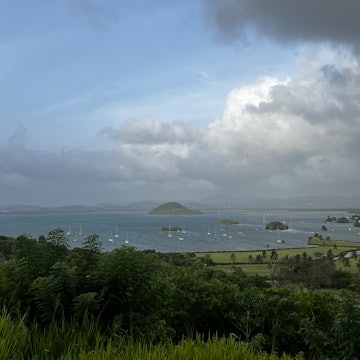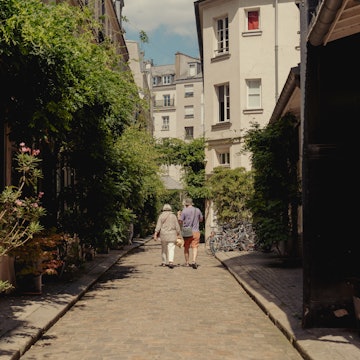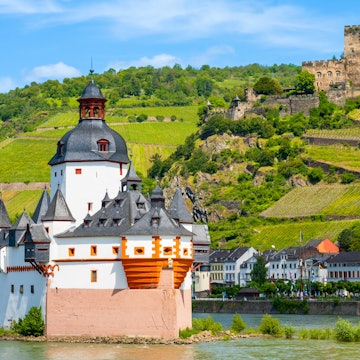

Archirondel Tower on Jersey, Channel Islands. Amy Lynch/Lonely Planet
Jersey was not at all what I expected. The 9x5-mile island off the coast of France and across the English Channel from Great Britain tends to fly under the radar for visitors to either place. But this Channel Island is blessed with white sand beaches, excellent seafood, and a strong hospitality industry that make it a worthy place to explore.
Despite its proximity to France, Jersey is now more culturally British than French. It has made itself a finance hub in the last few decades, and that, together with its extremely low tax rate, have made it a haven for those with lots of money who like to hang onto it. The island is home to massive houses, fancy cars and private planes. But these all exist side-by-side with a small, passionate fishing community, narrow rural roads with honesty boxes from which you can get the delightful Jersey potatoes, and some of the most beautiful coastal views to be found.
When to arrive: There are numerous direct flights to Jersey each day from the UK, and more from around the world throughout the week. There are also daily ferries from the UK and France. This means that arrival can be flexible – there’s no real benefit to arriving at a particular time of the week. Weather is mild and balmy in spring and autumn, with things heating up in summer. Winter can get cold and stormy and isn’t recommended.
How to get from the airport: Jersey is small and well served by public transport. There are a number of routes from the airport to St Helier, the capital, with Route 15 the most direct. Single adult tickets are £2.50 (US$3). Taxis from the airport are plentiful, though can be relatively expensive.
Getting around town: The public bus route on the island (run by Liberty Bus) is extensive and will get you where you need to go fairly easily. Taxis are also available, although they are expensive around town, too. Car rental is another option if you’d like the flexibility to go where and when you want, and there are lots of options available, including camper van rentals.
Where to stay: Jersey has the normal range of accommodation that you’d find in any town in the UK, with chain hotels side-by-side with Airbnb rentals and a number of luxury hotels. Housing costs are a recurring issue for islanders, with the effect of bumping up accommodation prices. For those traveling with a family, self-catering or budget hotels are the best option. Undercliff Guest House in Bouley Bay on the northeast of the island has a variety of self-catering options and a pool. If you’re interested in a more high-end stay, Longueville Manor is a five-star spot tucked away in an unassuming corner in the southeast. And for those on a budget, Durrell Wildlife Hostel is a farmhouse with basic amenities attached to Jersey Zoo.
What to pack: Bring walking or hiking shoes – there is a lot to explore on the island and you want to be mobile and comfortable. You’ll also want swimwear and beachy accessories; there are plenty of beaches around the island, some with such white sand and blue sea that you’ll think you’re in the Caribbean. But of course this is also northwest Europe, so have a rain jacket or umbrella with you at all times.
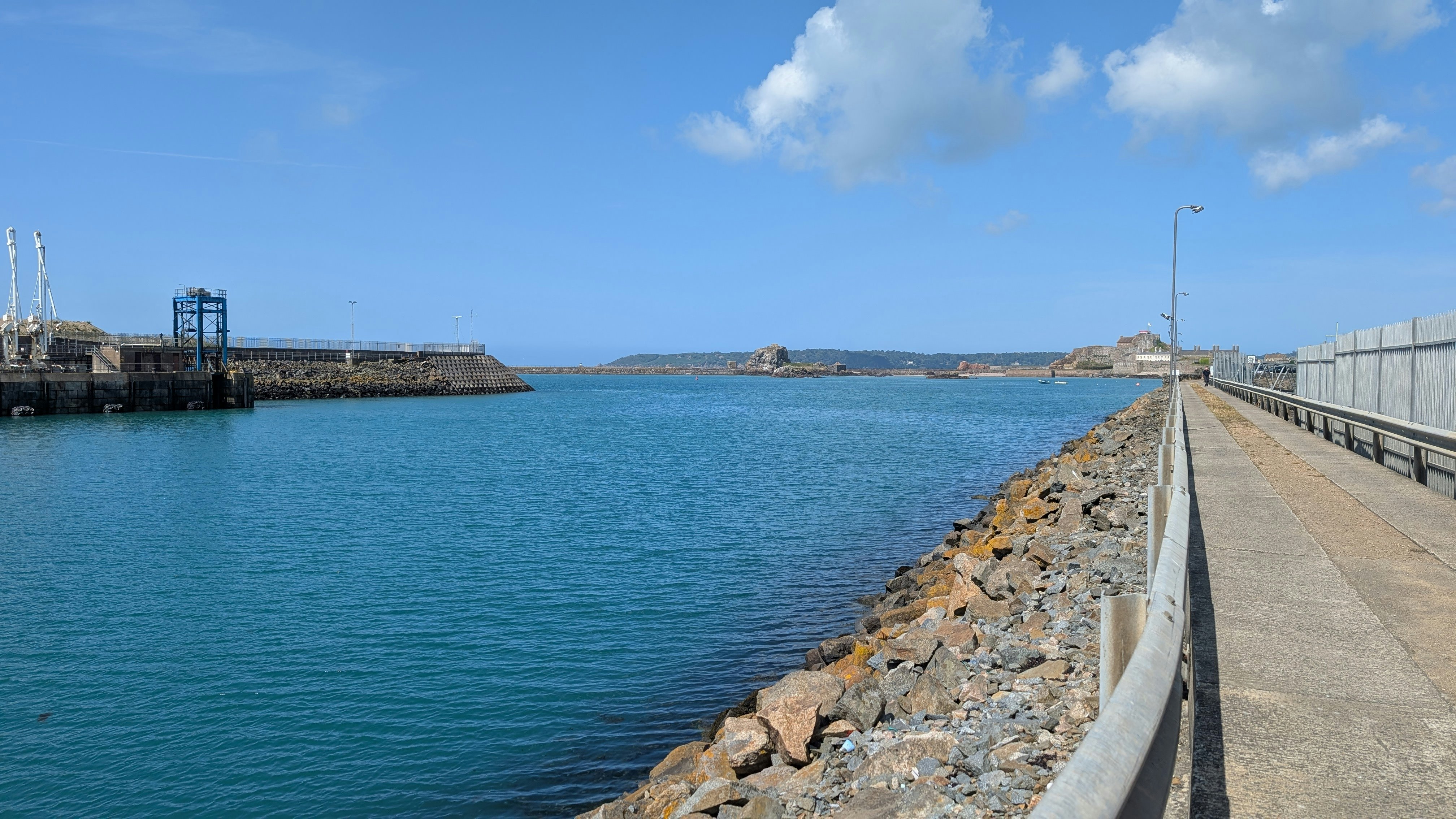
Day 1
How to spend the day
Anyone spending time on Jersey should take a ramble around its myriad harbors and shores. Unsurprisingly for an island, Jersey had a major fishing culture in the 1980s and 1990s. Fish were plentiful and there was money to be made. Today, there are only 30 full-time fishermen and women working. The reasons are manifold, but include fish stocks drying up, fish migration due to changing ocean temperatures, and tensions with French fishermen in the same waters. Climate change and ocean temperatures are an ongoing battle for those whose livelihoods come from the sea.
The main crab stocks used to be brown crabs (also called Chancre crabs), but with the water warming those stocks have migrated north, and spider crabs are the new catch. All of this puts Jersey at the forefront of global marine conservation efforts. With threats from the UK’s political decisions, French encroachment and climate change, the Jersey fisheries team has a lot to contend with. It is increasing regulations all the time, with size restrictions, seasonal restrictions and a ban on dredging and trawling in certain zones.
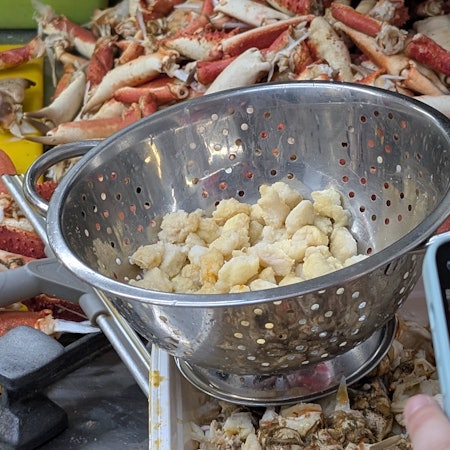
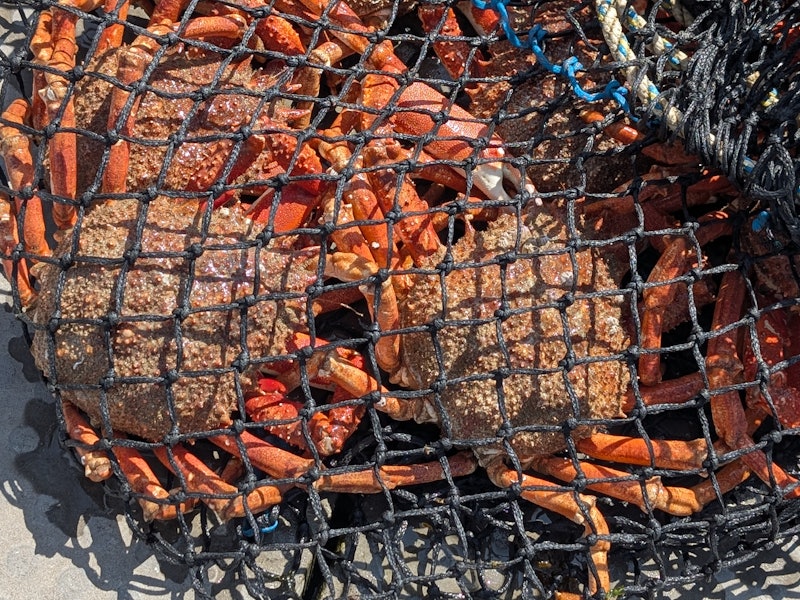
Gabby Mason is one of the young fishers trying to keep the industry alive and thriving. She owns and runs Jade-S Fisheries, based at Victoria Pier, and Driftwood Cafe in Archirondel. Mason and her gang fish for lobsters and spider crabs among many other types of seafood, providing for local restaurants. Watching Isabella, the longtime crab picker for Mason's catch, work through pounds and pounds of crab meat is to watch a master at work.
Take a ramble down to Victoria Pier to grab some of Mason's fresh catch, or keep an eye out for her mobile van. Or you could always make a stop at the gloriously located Driftwood Cafe, right on the beach at Archirondel, and have the seafood cooked and prepared for you.
Dinner
Longueville Manor, a Relais & Châteaux member, is not just a hotel: the restaurant in an old manor house is an attraction in its own right. Recently awarded a Michelin Key, the elegant restaurant is memorably delicious, and wine-lovers will appreciate the wine list and gorgeous wine cellar, put together with passion by hotel owner Malcolm Lewis. The hotel also has a kitchen garden that is free to explore. This is no token effort: rows and rows of lettuce, Jersey potatoes, herbs, onions, edible flowers, root vegetables and more are in the outside grounds, while the greenhouse is host to tomatoes, lemons, limes and peppers.
Executive Head Chef Andrew Baird’s dishes are imaginative and delicious, with lots of seafood on offer. The melt-in-your-mouth scallops were a personal favorite. The wine list is extensive and the cocktails impressive. As a pregnant attendee, I had a non-alcoholic selection, which managed the rare feat of being as tasty and alluring as the real thing.
Alternatively, the bar is more casual, with food that is just as high quality. A quieter spot with couches and lamps, the bar is where to go if you’re dining alone or just want to sit with a good book. There is nothing casual about the burger, though – juicy, flavourful and generous. It’s a great choice for when you’ve had your fill of seafood.
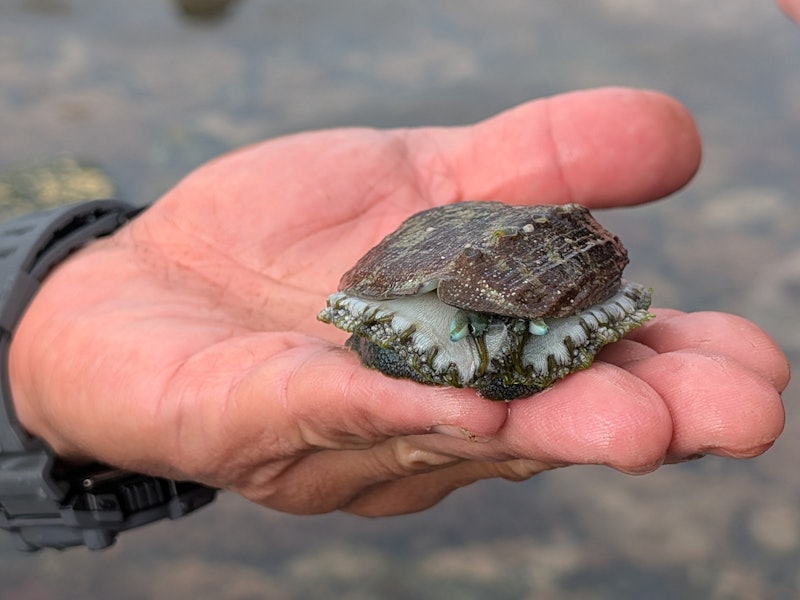
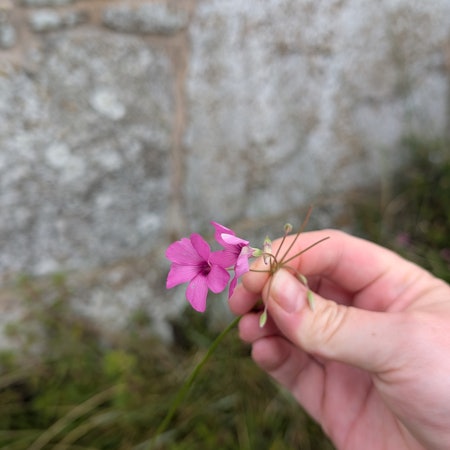
Day 2
Morning
Kazz Padidar of Wild Adventures, a charismatic local forager and adventurer, is the person to talk to if you want to learn more about the plant and sea life around Jersey. Growing up on the island, Padidar spent his formative years learning to subsist on what the island naturally provides. Now he runs foraging workshops for local kids and interested visitors when he can find the time. He also forages to supply restaurants around the island, so you might be sampling his foraged treats without knowing it.
If you can grab him for an outing, you’re in for an engaging and fun couple of hours. Padidar took us on an odyssey exploring wild plants and herbs, many of which we sampled along the way, such as rock samphire, sandwort and wood sorrel; then we headed to rock pools to look for seaweed and search for lobsters and crabs. We even caught sight of the rare ormer, a species of sea snail.
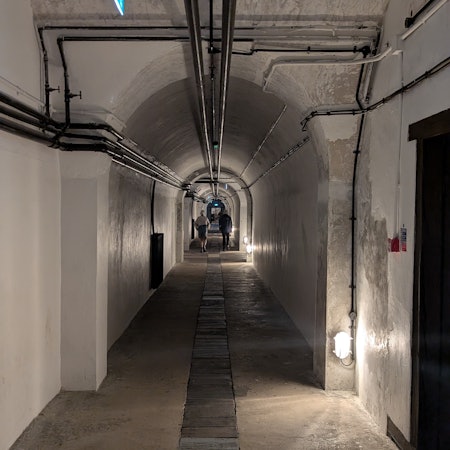
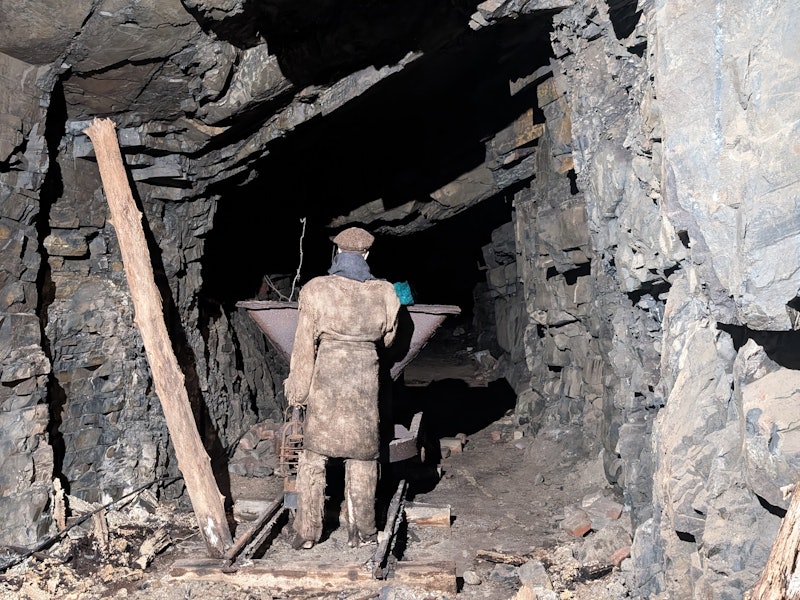
How to spend the day
Jersey’s history is fascinating. As part of Britain, it was invaded by the Germans in June 1940 and used as a base, with no help or retaliation by the British government. The occupation led to much hardship for the population, with violence, hunger and deprivation the norm for the four to five years of the occupation. The remnants of the German presence is still visible on the island in Marine Peilstand towers and artillery batteries all around the coast.
The Jersey War Tunnels are an excellent way to learn more about the occupation, including the events leading up to it, how it progressed during the war and elation at the Allies’ victory. Built by the Germans as a hospital during the occupation, these unfinished tunnels have now been turned into a large museum of the time, with personal stories of various islanders, hundreds of artifacts – including vehicles and weaponry – and some fascinating little-known stories of slaves who were brought here from Russia, Spain and elsewhere to build the tunnels. It’s a fascinating insight into the story of the island, if a little overdone at the end. Take a few hours to explore the tunnels fully – there’s a lot to see and learn. The museum has a good café with serviceable hot drinks, sandwiches and scones where you can warm up from the chilly tunnels and process everything you’ve just seen.
Dinner
Sumas Restaurant in Gorey is another great choice if you’re looking for fine dining with the best seafood to be found. With a fabulous terrace looking down at the seafront and great views of Mont Orgueil Castle, this high-end spot manages to be both elegant and casual. The seafood platter is unmatched. It’s the perfect spot to while away an evening with a bottle (or two) of wine as you watch the sun go down across the water.
After dark
Jersey isn’t known for its wild nightlife, but anyone looking for an evening tipple will find traditional pubs, high-end cocktail bars and plenty in between around the town hubs. The Blue Note is a solid option for local beer, comfortable surroundings and jazz. It has regular live music in its upstairs venue. Cocktail lovers should try the Blind Pig Speakeasy, a 1920s-inspired spot with delightful concoctions. For those looking for something a bit more casual, Kitty O’Shea’s is a classic pub, with sports on TV, outdoor seating and live music every weekend.
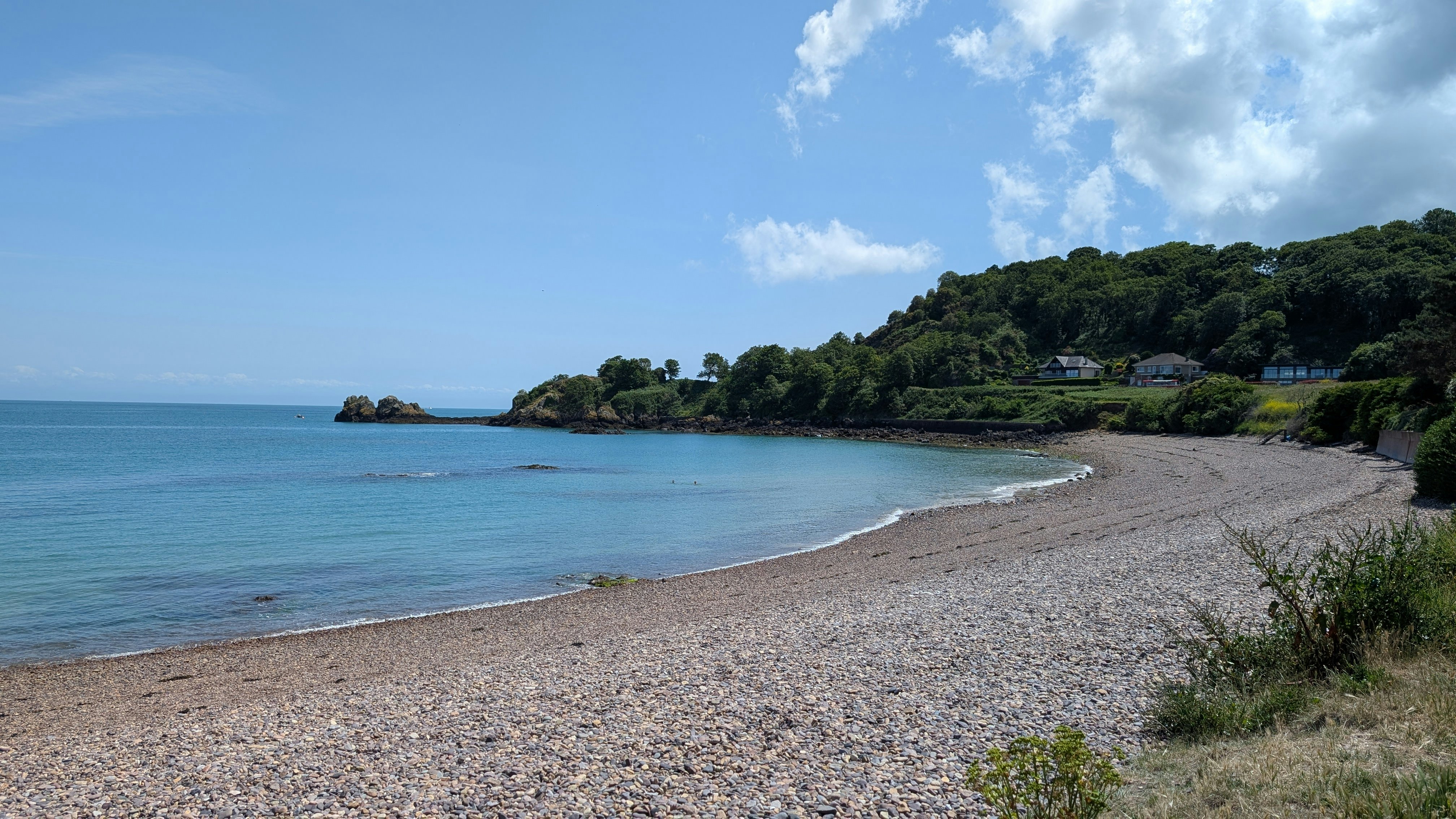
Day 3
Morning
Before venturing home, any visitor to Jersey should take a few hours for one of the walking or hiking trails to be found around the island. The North Coast Cliff Path is the perfect choice for those with a yen for the dramatic: cliffs plunging down to the sea, wild birds wheeling overhead and steep paths to hidden beaches. Choose a section of the walk, or put aside a day to take on the whole thing from Rozel to Greve de Lecq (17km [11 miles]). The tree-lined Railway Walk along Jersey’s old railway line is a more peaceful affair. It will take you from St Aubin to La Corbière and also suits a leisurely cycle.
However much you manage to cram in, a weekend will never be enough to explore everything Jersey has to offer. There will always be more delicious seafood to sample, more historic sites to discover, more local stories to hear. There will always have to be a next time.







